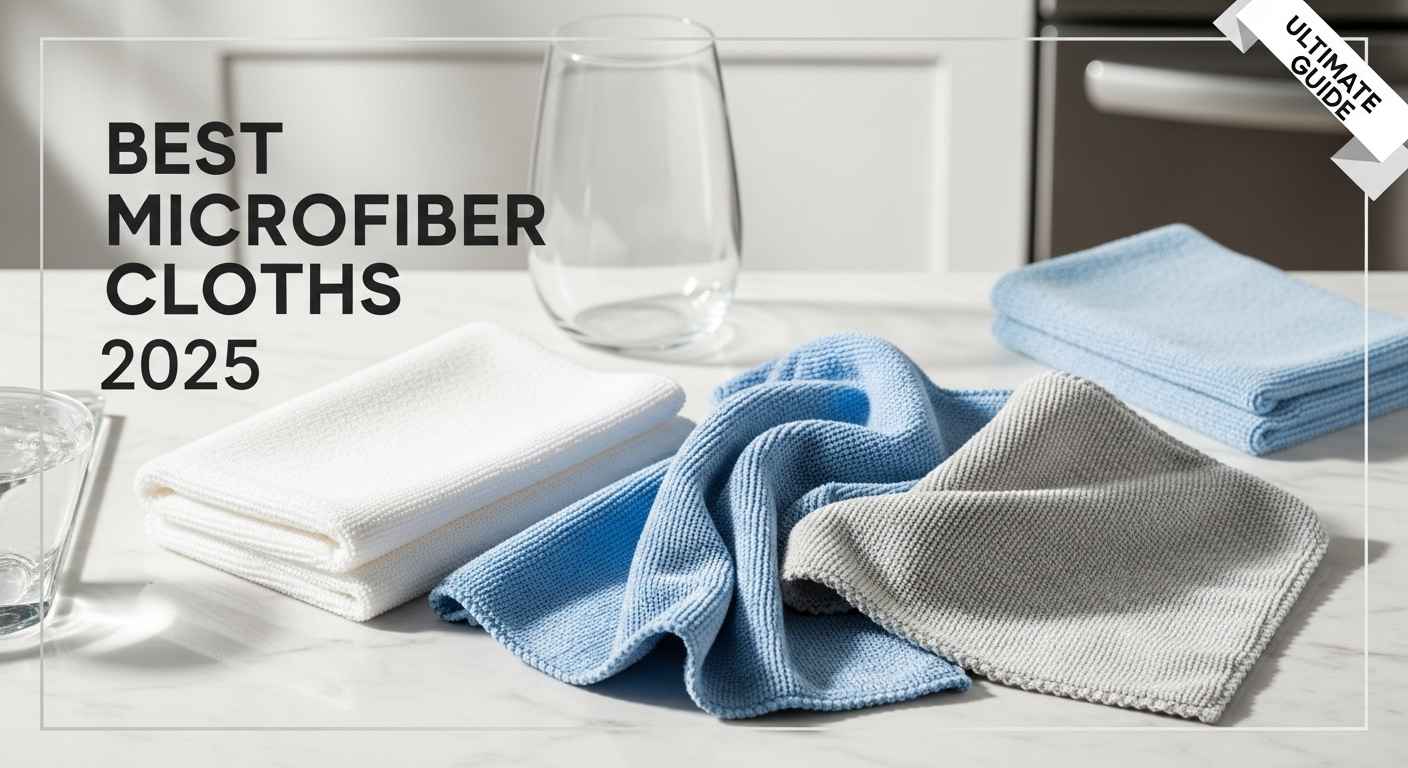Microfiber cloths have changed how we clean our homes, cars, and delicate surfaces. These tiny synthetic fibers capture dirt and bacteria better than traditional cleaning cloths. But with hundreds of options available, finding the right microfiber cloth can feel overwhelming.
This guide covers everything you need to know about choosing the best microfiber cloths for your specific cleaning needs. We’ll break down different types, key features to look for, and top recommendations based on real testing results.
What Makes Microfiber Cloths Special?
Microfiber cloths can pick up surface bacteria and microorganisms while removing dirt more effectively than cotton or paper towels. The secret lies in their construction. Each microfiber strand is 100 times thinner than human hair, creating millions of tiny spaces that trap particles.
Key Benefits:
- Capture microscopic dirt and bacteria
- Work effectively with just water
- Reusable up to 500 washes
- Won’t scratch delicate surfaces
- Highly absorbent
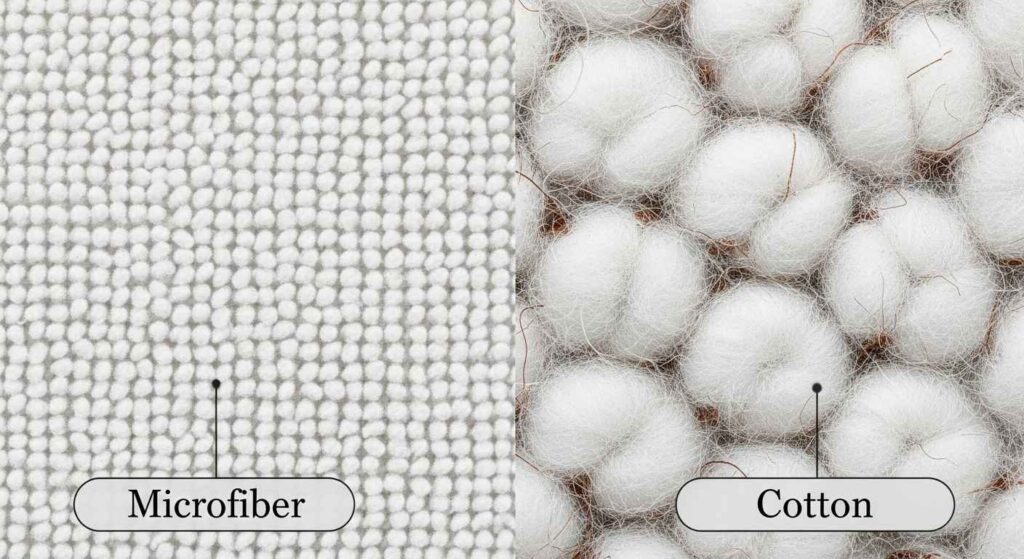
Understanding Microfiber Quality: GSM Ratings
GSM (grams per square meter) measures microfiber cloth density and quality. Economy grade microfiber ranges from 150 to 250 GSM and professional grade is considered to be 300 and above.
GSM Quality Guide:
- 150-250 GSM: Budget option, basic cleaning
- 300-400 GSM: Professional grade, best for most tasks
- 400-600 GSM: Premium quality, heavy-duty cleaning
- 600+ GSM: Ultra-plush, delicate surface cleaning
Lower density cloths (200 GSM and less) are more likely to streak glass or leave lint behind. For reliable results, stick with 300 GSM or higher.
Types of Microfiber Cloths
Terry Weave Microfiber
All-purpose cloths are safe and effective for nearly any cleaning job, making them a staple in every cleaning kit. Terry weave features loops that create extra surface area for absorption.
Best For:
- General household cleaning
- Dusting furniture
- Kitchen countertops
- Bathroom surfaces
Waffle Weave Microfiber
Textured microfiber cloths, such as waffle weaves, bring extra scrubbing and drying power to tougher jobs. The waffle pattern increases surface area and cleaning power.
Best For:
- Glass and mirrors
- Stainless steel appliances
- Car drying
- Heavy soil removal
Smooth Weave Microfiber
Glass cloths feature a smooth knit weave designed specifically for streak-free cleaning on reflective surfaces. These create the smoothest finish.
Best For:
- Electronics screens
- Eyeglasses
- Camera lenses
- Final polishing
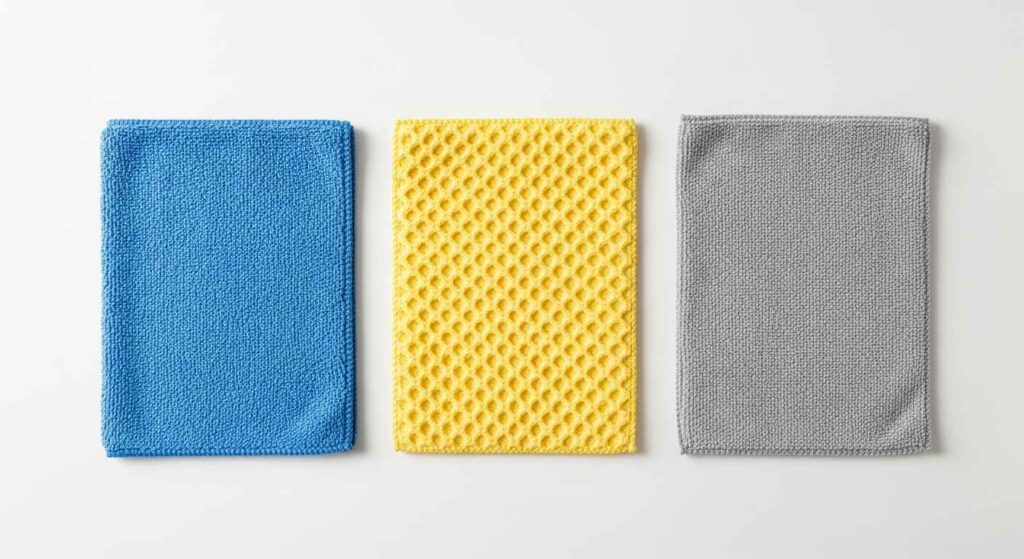
Best Microfiber Cloths by Category
Best Overall: E-Cloth General Purpose Cloth
Best overall: E-Cloth Reusable Microfiber Cleaning Cloths according to Popular Science testing. These 300 GSM cloths work on multiple surfaces with just water.
Features:
- 300 GSM professional quality
- 12″ x 12″ size
- Removes 99% of bacteria with water alone
- Machine washable up to 300 times
- Chemical-free cleaning
Best for Electronics: MagicFiber Cleaning Cloths
Best for electronics: MagicFiber Microfiber Cleaning Cloths feature ultra-smooth weave that won’t scratch delicate screens.
Features:
- Smooth weave design
- 6″ x 7″ compact size
- Safe for all screen types
- Individual packaging prevents contamination
- Lint-free performance
Best for Kitchen: Zwipes Microfiber Towels
Best for kitchens: Zwipes 735 Microfiber Towel Cleaning Cloths 5 Best Microfiber Cleaning Cloths, Tested & Reviewed handle grease and food residue effectively.
Features:
- Terry weave construction
- 12″ x 16″ generous size
- Highly absorbent
- Machine washable
- Food-safe materials
Best for Cars: Chemical Guys Professional Towels
Best for cars: Chemical Guys Professional Grade Microfiber Towels provide scratch-free vehicle cleaning.
Features:
- 350 GSM weight
- 16″ x 16″ large size
- Dual-sided design
- Scratch-free guarantee
- Professional detailer approved
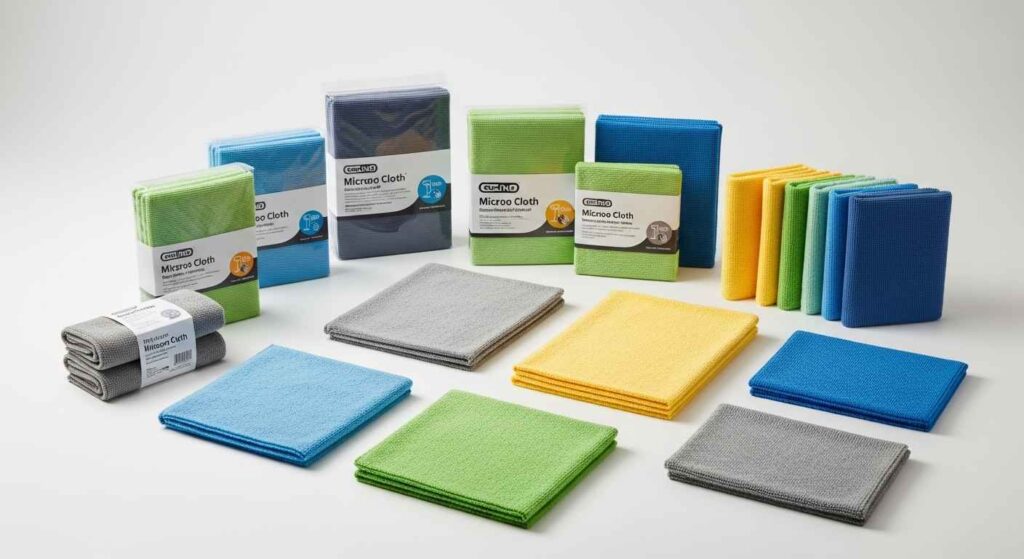
How to Choose the Right Microfiber Cloth
Consider Your Cleaning Task
Different surfaces require specific cloth types. Match your microfiber cloth to the job:
Delicate Surfaces: Use smooth weave, high GSM cloths Heavy Cleaning: Choose waffle weave or textured options General Use: Terry weave works for most household tasks Large Areas: Bigger cloths (16″ x 24″) cover more ground
Check the Blend Ratio
Quality microfiber blends 80% polyester with 20% polyamide (nylon). This ratio provides the best cleaning performance and durability.
Look for Proper Edge Construction
Sewn edges prevent fraying and protect delicate surfaces from scratches. Avoid cloths with rough or cut edges.
Size Matters
Small (6″ x 7″): Electronics, glasses, detail work Medium (12″ x 12″): General cleaning, countertops Large (16″ x 16″): Car washing, floor cleaning Extra Large (16″ x 24″): Large surfaces, drying
Proper Care and Maintenance
Washing Guidelines
- Use warm water (not hot)
- Skip fabric softener (clogs microfibers)
- Avoid bleach and harsh chemicals
- Wash separately from cotton items
- Air dry or low heat tumble dry
Extending Cloth Life
- Rinse thoroughly after each use
- Store clean and dry
- Replace when fibers start shedding
- Keep separate cloths for different tasks
Related: Learn about eco-friendly laundry detergents that work well with microfiber cloths.
Common Mistakes to Avoid
Using Fabric Softener
Fabric softener coats microfibers and reduces their cleaning ability. Always skip softener when washing microfiber cloths.
High Heat Drying
Excessive heat melts microfiber strands. Use low heat or air dry to maintain cloth integrity.
Cross-Contamination
Using the same cloth for toilets and kitchen surfaces spreads bacteria. Keep separate cloths for different areas.
Mixing with Cotton
Cotton lint sticks to microfiber cloths during washing. Always wash microfiber items separately.
Budget vs Premium Options
Budget Cloths (Under $1 per cloth)
- 200-250 GSM typically
- Basic cleaning tasks only
- Shorter lifespan
- May leave lint or streaks
Mid-Range Cloths ($1-3 per cloth)
- 300-350 GSM usually
- Good all-around performance
- Reasonable durability
- Best value for most users
Premium Cloths ($3+ per cloth)
- 400+ GSM weight
- Professional quality
- Maximum durability
- Specialized applications
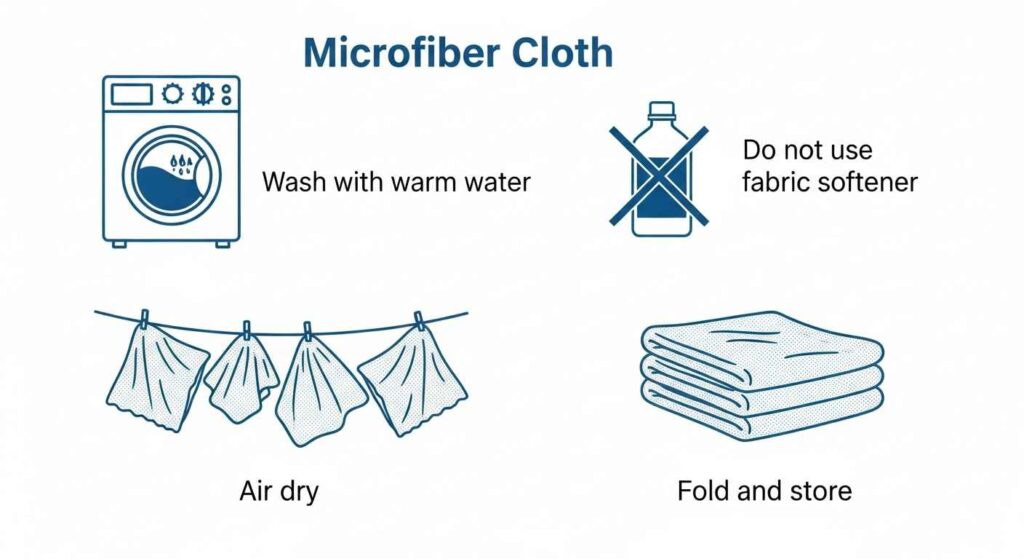
Environmental Benefits
Microfiber cloths support green cleaning practices:
- Reduce paper towel waste
- Work with water alone (fewer chemicals)
- Last hundreds of washes
- Decrease plastic bottle consumption
Related: Check out our guide on stubborn stain removal using microfiber cloths.
Frequently Asked Questions
How long do microfiber cloths last?
Quality microfiber cloths can withstand 300-500 wash cycles with proper care. Budget options may only last 50-100 washes.
Can I use bleach on microfiber cloths?
No, bleach damages microfiber strands and reduces cleaning effectiveness. Use oxygen bleach if disinfection is needed.
Why do my microfiber cloths smell after washing?
Trapped bacteria or detergent residue causes odors. Wash in hot water with less detergent, then rinse thoroughly.
Are expensive microfiber cloths worth it?
Premium cloths offer better performance, durability, and specialized features. For heavy use, the investment pays off through longer lifespan and superior results.
Final Recommendations
The best microfiber cloth depends on your specific needs:
For Most People: Choose 300-350 GSM terry weave cloths in 12″ x 12″ size. These handle 80% of household cleaning tasks effectively.
For Car Owners: Invest in 350+ GSM waffle weave cloths specifically designed for automotive use.
For Electronics: Get dedicated smooth weave cloths to prevent screen scratches.
For Professional Cleaning: Use 400+ GSM cloths with proper edge construction for consistent results.
Remember that quality microfiber cloths are an investment. While they cost more upfront than disposable options, they save money long-term while providing superior cleaning performance.
Start with a basic set of 6-8 cloths in different sizes, then add specialized options as needed. With proper care, quality microfiber cloths will serve you well for years while keeping your home spotless and your surfaces protected.
Related: Organize your cleaning supplies efficiently with our small space closet organization ideas.
